Our guest author is Anne Marie Pace, author of the Vampirina series and other picture books, including her latest, BUSY EYED DAY. She joins us today to talk about picture book revision. This is a great lesson to share with kids when you’re talking about word choice.


We’re all familiar with the writing process. Whatever terms you use with your students, it’s basically the same five steps: prewriting, drafting, revising, proofreading, publishing. Revision is my favorite part of the process. I love making sure I’ve told a strong story with a strong plot in the strongest way possible. Part of telling that story in the strongest way possible is through very careful, even nit-picky, examination of each sentence.
Personally, I tend to write clean, so even my drafts have complete grammatically-correct sentences and few spelling and punctuation errors. (That’s not a requirement for being a writer; it’s simply something that I’m able to do. I know lots of wonderful writers who write messy and that’s fine.) So you might assume that once I’ve ensured the story is well-told, with complete sentences in the right order, I’m done. But I’m not. Grammatically correct sentences are fine; but I want to give more to my readers than serviceable writing. I want each word in my picture books to be the best word I can find. We know what Mark Twain said: “the difference between the almost right word and the right word is really a large matter—it’s the difference between the lightning bug and the lightning.” I want rhythms that are fun to read aloud, even in prose. I want my books to be the best I can create at that time in my writing journey—and I can do better than serviceable.
Here are some examples from some of my published and upcoming books. I’ll give you the original and revised versions and explain why I made the changes I did.
From VAMPIRINA BALLERINA
Original: If you wish to become a ballerina, you have to do more than wear a tutu and dream about dancing all day long.
Final: If you are going to be a ballerina, you have to do more than wear a tutu and dream about dancing.
There is nothing wrong with wishing. Wishes are hopeful and give us direction. But here I want Vampirina to be more assertive. Being a ballerina isn’t something you wish for, that a genie in a bottle can grant you. Being a ballerina takes hard work, and to do it well, you must be determined to do that work. Thus I replaced “wish” with “are going to” and it was a good change.
From PIGLOO
Original: Even though snow is flying everywhere, Pigloo keeps his eyes open so he’ll know when he’s found the North Pole.
Final: Snow is flying everywhere, but Pigloo keeps his eyes open so he’ll know when he’s found the North Pole.
In this case, the first sentence is grammatically correct, and for older readers the compound-complex sentence would be fine. But the cause-and-effect in the first sentence isn’t necessary to the sentence’s meaning, and using “Snow is flying everywhere” brings importance to the snow and paints a picture. “Even though” diminishes the image of the snow flying everywhere in a way that isn’t as effective.
From GROUNDHUG DAY
Original: “Oh, you know Bunny,” Moose said. “He’s always scrambling this time of year.”
Final: “Oh, you know Bunny,” Moose said. “He’s always holed up this time of year.”
Among other things, GROUNDHUG DAY is Groundhog missing Valentine’s Day because he goes back to his hole for the last six weeks of winter. But the final illustration of this book shows Bunny dyeing beautiful Easter eggs. The visual joke is that Groundhog has emerged, but now Bunny is unavailable. I liked the first version because it plays with the concept of eggs without being explicit; however, in the end, I realized that kids of picture book age tend to be quite literal. I didn’t want kids to think the Easter Bunny was going to scramble the contents of their Easter baskets! It’s not that there’s no place for word play in picture books—of course there is—but I felt the last joke had to stand on its own, without being explained to the child. And Bunny being “holed up” reflects Groundhog being holed up earlier in the book.
From BUSY-EYED DAY
Original: Glitter-eyed girl/Skitter-eyed squirrel
Final: Squirrel-eyed girl/Girl-eyed squirrel
I loved the rhyme of glitter and skitter, but in the end, I chose the version that implies the squirrel and girl are gazing at each other. A girl wearing glitter sunglasses and a squirrel glancing around nervously doesn’t tell the same story as two beings taking note of the other, and the book is primarily about noticing, so the second version was more appropriate.

Original:
No more spider,/No more bug.
Two-armed mama/Gives a hug.
Final:
No more spiders/No more bugs
Loving mama gives big hugs.
At first I liked the contrast of all the “–eyed” constructs, which make up every couplet, with “two-armed.” But in the end, I decided the contrast didn’t add anything to the final story. Also Sammi has been away from her mother for some time, and it makes sense that she’d run to Mama for a hug after seeing a bug that made her nervous.
From VAMPIRINA AT THE BEACH
Original: Whether or not you come out on top, finishing with grace makes you a real winner.
Final: Whether or not you come out on top, finishing with grace is what makes you a real winner.
I’m usually looking for ways to cut words, not add them, and the final version is definitely wordier. The “is what” is unnecessary to the meaning. However, the final version reads aloud more smoothly, with better rhythm.
I hope these examples have given you something to think about in your own writing.
Your assignment: Use your work-in-progress, or go back to one of your earlier writing exercises from this week. Find a merely serviceable sentence, and rewrite it to make it sing. If you like, share your revision in the comments!








































 When I was working on my June 2018 novel, BREAKOUT, about a small-town prison break and manhunt that change the way three kids see their neighbors and the place they call home, I wrote the first draft in first person point of view, from the point of view of Nora Tucker, the prison superintendent’s daughter. I revised. And revised. And somewhere around my third draft, thanks to feedback from writer friends, I reconsidered that POV decision.
When I was working on my June 2018 novel, BREAKOUT, about a small-town prison break and manhunt that change the way three kids see their neighbors and the place they call home, I wrote the first draft in first person point of view, from the point of view of Nora Tucker, the prison superintendent’s daughter. I revised. And revised. And somewhere around my third draft, thanks to feedback from writer friends, I reconsidered that POV decision.


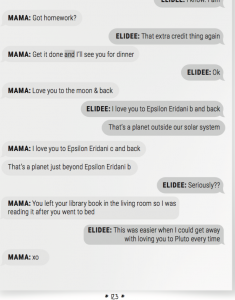



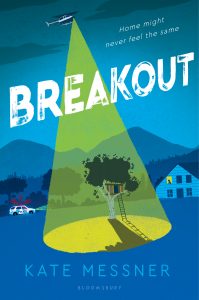 Mini-Lesson Monday – July 9 –
Mini-Lesson Monday – July 9 – 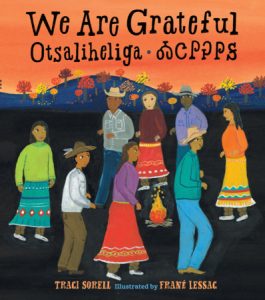
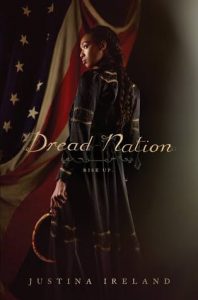 Thursday Quick-Write – July 12 –
Thursday Quick-Write – July 12 – 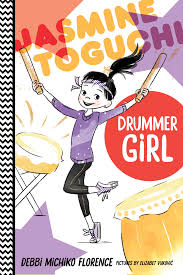
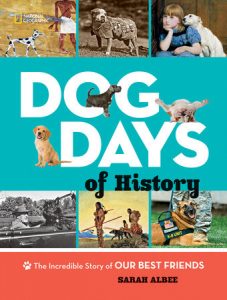 Mini-Lesson Monday – July 23 –
Mini-Lesson Monday – July 23 – 

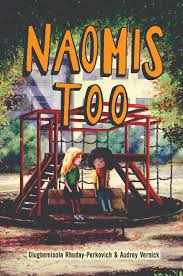
 Thursday Quick-Write – August 2 –
Thursday Quick-Write – August 2 – 